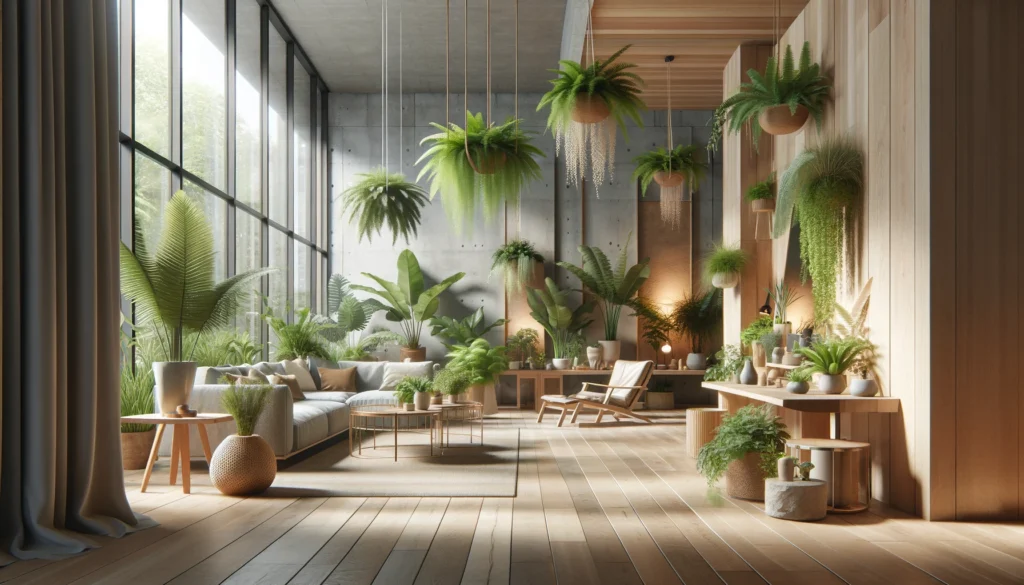In recent years, biophilic design has gained significant popularity as people increasingly recognize the profound benefits of connecting with nature, even within their living and working spaces. The rise of biophilic design is not just a trend, but a fundamental shift in how we approach architecture and interior design. This design philosophy focuses on incorporating natural elements into indoor environments, promoting physical and mental well-being, boosting creativity, and enhancing productivity. In this article, we will explore what biophilic design is, its principles, and how it is transforming modern interiors.
What is Biophilic Design?
Biophilic design is derived from the word “biophilia,” which means a love for life or living systems. The concept emphasizes humanity’s intrinsic connection with nature and how integrating natural elements into built environments can enhance our overall well-being. Biophilic design seeks to incorporate these elements in a way that makes indoor spaces feel more connected to the natural world.
The core of biophilic design lies in creating environments that foster this connection by using natural light, plants, water, and organic materials such as wood and stone. The goal is to design spaces that mimic the natural environment and create a calming and rejuvenating atmosphere.
Key Principles of Biophilic Design
To successfully incorporate biophilic design into homes, offices, or public spaces, there are several key principles to follow. These principles provide a foundation for designing interiors that bring nature indoors in meaningful and impactful ways.
1. Direct Connection with Nature
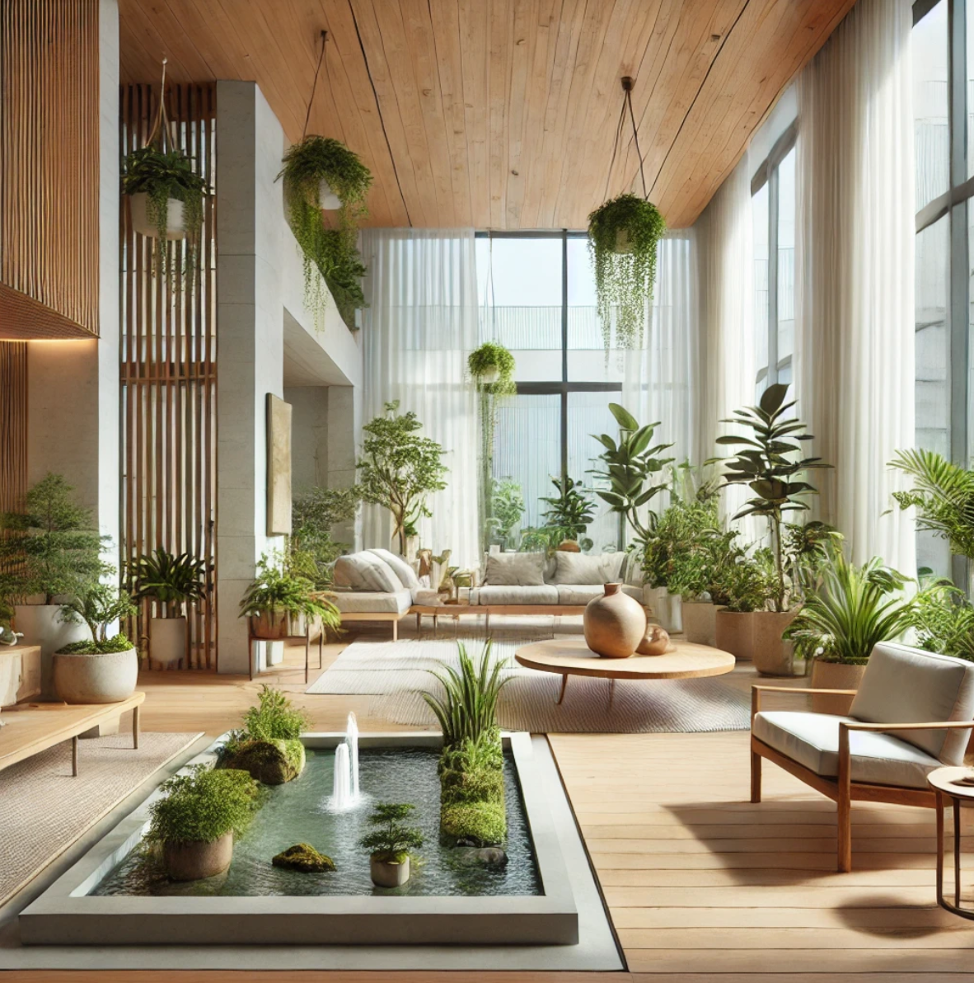
The most obvious and powerful element of biophilic design is establishing a direct connection with nature. This can be achieved through:
- Natural light: Maximizing the use of windows, skylights, and glass doors to let in as much natural light as possible.
- Indoor plants: Incorporating a variety of plants throughout the space, from small potted plants to vertical gardens.
- Water features: Adding indoor water features such as fountains or aquariums to provide the soothing sound and aesthetic of moving water.
By allowing natural elements to play a prominent role in the design, spaces can feel alive and dynamic.
2. Natural Materials and Textures
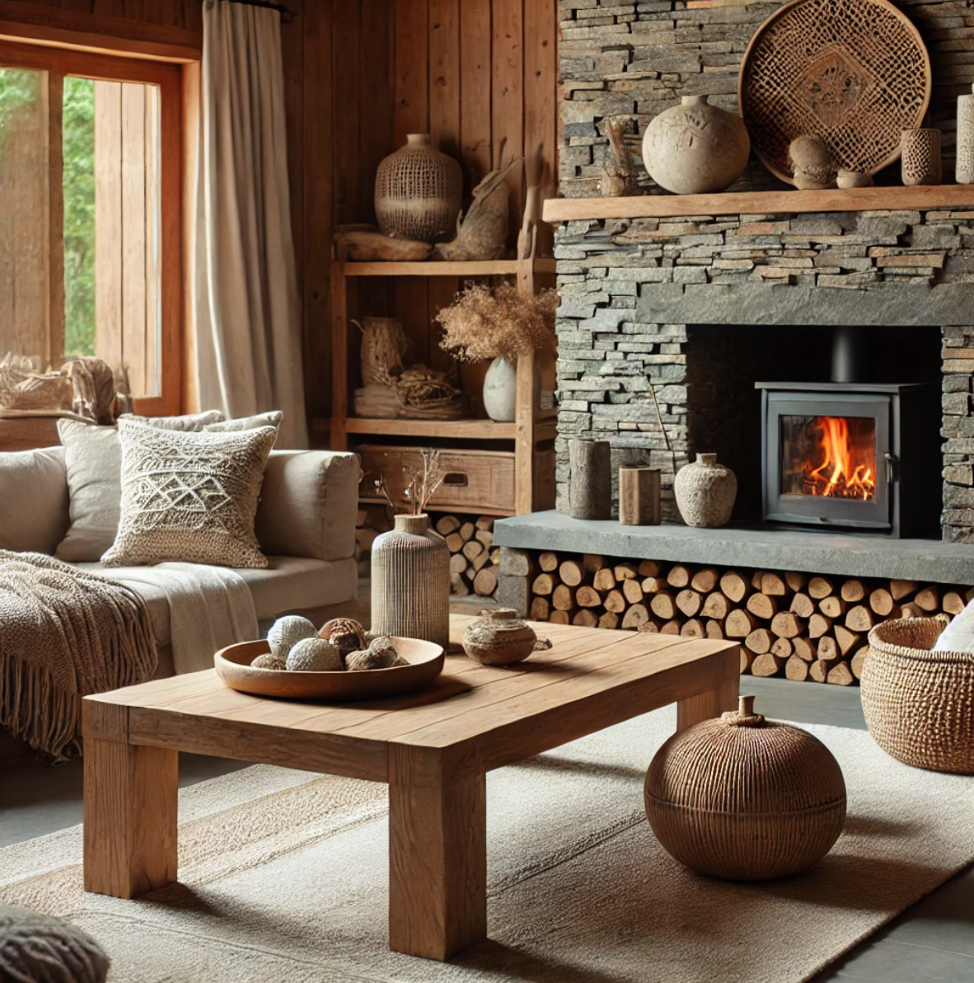
Using natural materials such as wood, stone, and bamboo in construction and decor is another essential aspect of biophilic design. These materials evoke a connection to nature and add warmth and texture to interior spaces. Textiles like wool, cotton, and linen further enhance the tactile experience of being in a natural environment.
Reclaimed wood, sustainable bamboo flooring, stone countertops, and organic fabrics create a sensory-rich experience that fosters comfort and relaxation.
3. Views of Nature

Providing visual access to the natural world is a key element of biophilic design. Studies have shown that views of nature, even through a window, can reduce stress and improve mental well-being. Designers aim to orient indoor spaces so that they overlook gardens, trees, or other natural landscapes.
Where views of nature are limited, creative solutions such as nature-inspired murals, large-scale photographs, or artwork featuring natural scenes can be employed to bring a sense of the outdoors inside.
4. Natural Shapes and Forms
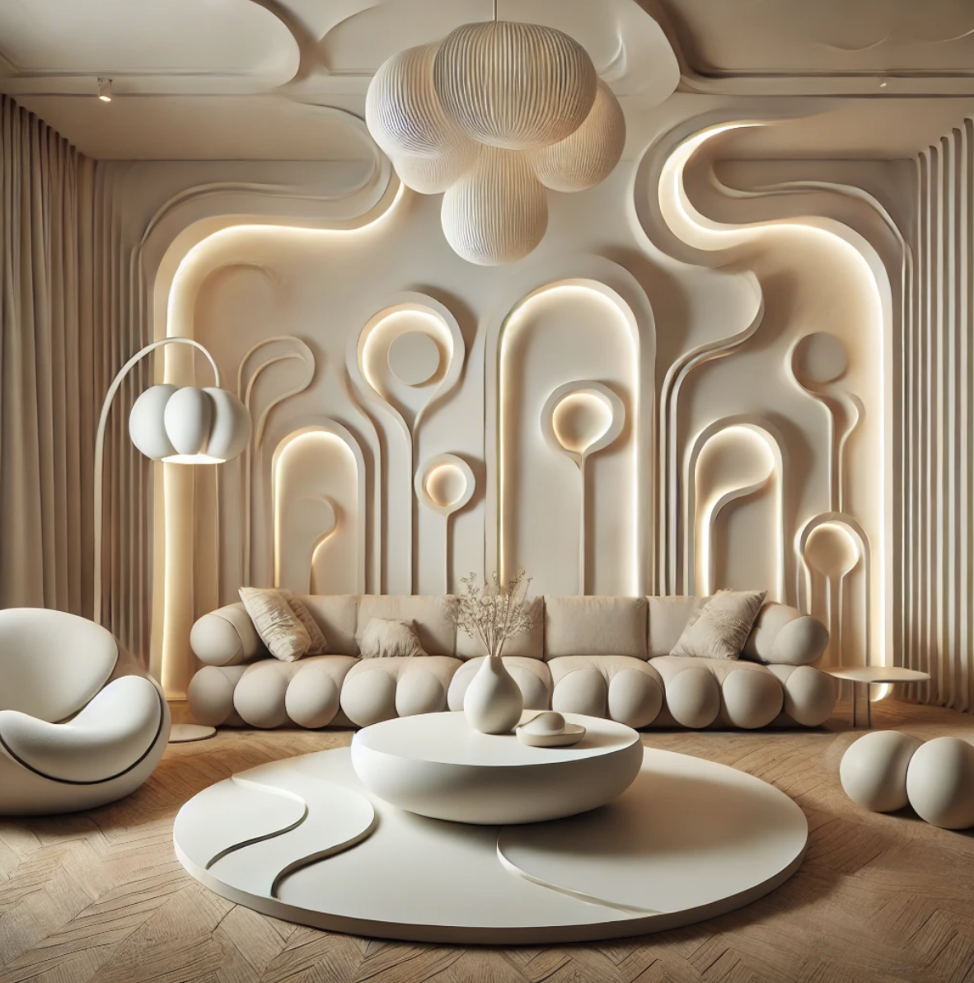
Biophilic design often incorporates organic shapes and patterns that mimic nature’s curves and forms. Instead of rigid lines and geometric shapes, this design embraces flowing, irregular forms found in the natural world, such as waves, leaves, or tree branches.
This principle is often applied through furniture design, architectural details, and even lighting fixtures. Curved sofas, organic-shaped coffee tables, and circular light fixtures can help soften the environment and make it feel more inviting.
5. Spatial Variability and Refuge
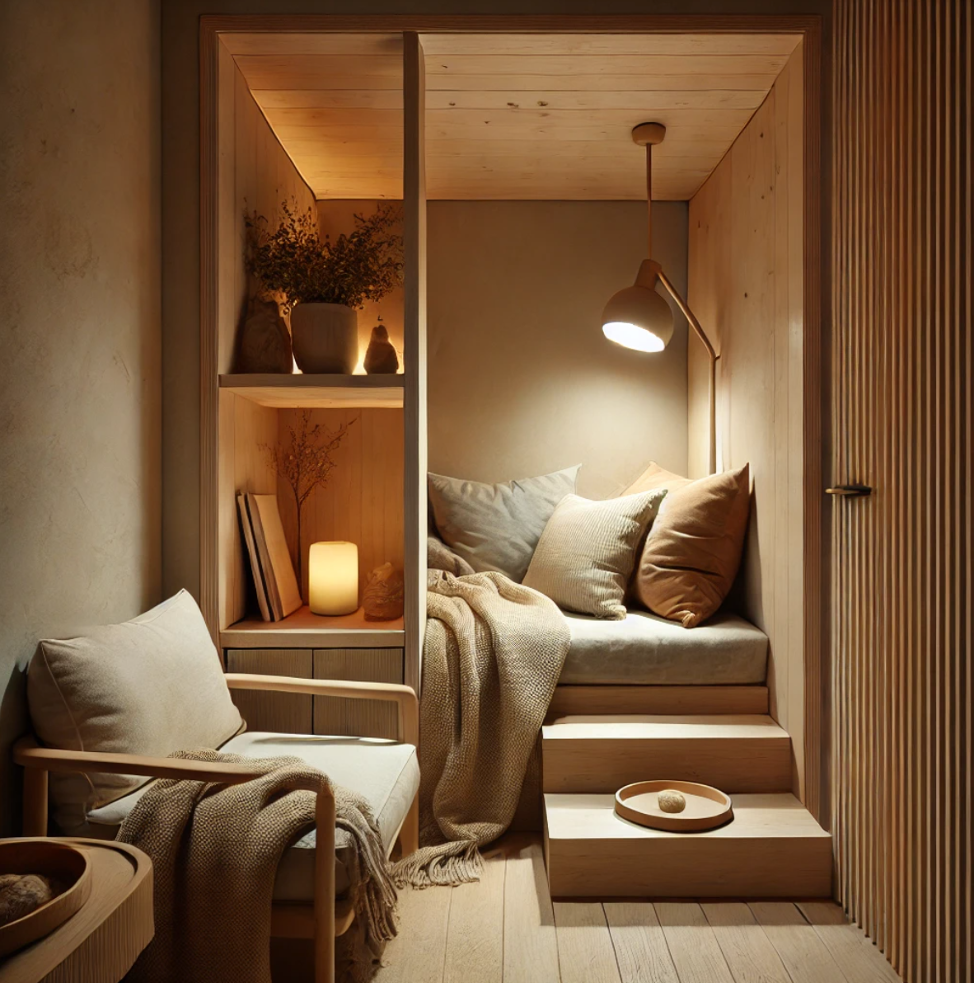
Nature offers a variety of environments—open, expansive landscapes, shaded areas, and cozy, sheltered nooks. Biophilic design mimics this variability by offering different types of spaces within a building or home. For example, an open living room can be balanced with a cozy reading nook or private corner for relaxation.
This “refuge” concept in biophilic design promotes feelings of safety and comfort, allowing occupants to retreat from overstimulation and enjoy peaceful moments of solitude.
Benefits of Biophilic Design
Biophilic design offers numerous benefits that extend beyond aesthetics. It has been shown to positively impact physical and mental health, enhance cognitive function, and improve overall quality of life. Here are some of the key benefits:
1. Improved Well-being and Mental Health
Biophilic environments are associated with reduced stress, anxiety, and depression. The presence of natural elements, such as plants and water, triggers a calming response in the brain, helping occupants feel more relaxed and grounded. Additionally, natural light has been shown to improve mood and regulate circadian rhythms, contributing to better sleep quality.
2. Enhanced Productivity and Creativity
Incorporating biophilic elements into workspaces can significantly boost productivity and creativity. Exposure to nature has been linked to improved cognitive function, increased focus, and enhanced problem-solving abilities. This is particularly important in offices and creative spaces, where workers need to maintain high levels of concentration and creativity.
3. Better Air Quality
One of the most practical benefits of biophilic design is improved air quality. Indoor plants help filter pollutants from the air and produce oxygen, creating a cleaner and healthier indoor environment. In addition, natural ventilation systems and strategic placement of windows can improve airflow and reduce reliance on artificial ventilation systems.
4. Increased Connection to Nature
Incorporating biophilic design into homes or offices fosters a deeper connection to the natural world, which is essential for human well-being. This connection promotes mindfulness, a sense of calm, and a greater appreciation for nature. For people living in urban environments, biophilic design helps bridge the gap between indoor life and the natural world outside.
Biophilic Design in Practice
Biophilic design can be applied in a variety of settings, from homes and offices to hospitals and public spaces. Here are some practical examples of how biophilic design is transforming different types of environments:
- Homes: Indoor gardens, large windows, and natural materials like wood and stone can be used to create a biophilic environment in living spaces. Open-concept designs with access to outdoor patios or courtyards further enhance the indoor-outdoor connection.
- Offices: Workspaces can benefit from biophilic design through the incorporation of living walls, natural light, and materials like wood and natural fabrics. These elements help reduce stress and improve focus in office environments.
- Hospitals: Healthcare facilities are increasingly incorporating biophilic design to promote healing and reduce stress for patients. Natural light, views of nature, and indoor plants create a more soothing and calming environment, which can contribute to faster recovery times.
Conclusion: The Future of Biophilic Design
As urbanization continues to rise and people spend more time indoors, the need for a strong connection to nature becomes even more crucial. Biophilic design offers a solution by bringing the natural world into our homes, offices, and public spaces. By integrating natural elements, materials, and forms into interior design, we can create environments that foster well-being, enhance productivity, and improve overall quality of life.
The rise of biophilic design is not a fleeting trend—it’s a movement that recognizes the importance of nature in our daily lives. As more people adopt this approach, the future of architecture and design will be greener, healthier, and more harmonious with the natural world.

